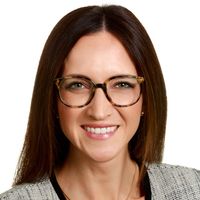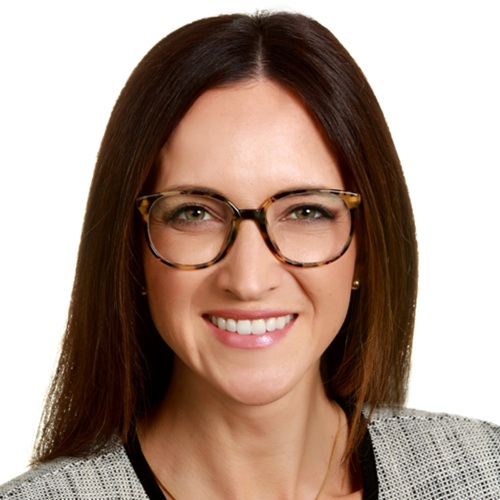Parents and Caregivers: Don't Miss Your Roth Conversion Window
Caring for a child or parent can mean a drop in income and a lower tax bracket. Why not take advantage by moving money into a Roth account? Here's how it works.


Taking time out of the workforce to have a child or care for an aging parent often means your taxable income drops.
That "downtime" can be a smart window to convert part of a pre-tax IRA to a Roth IRA — paying tax at today's lower rate, so future growth inside the Roth can be tax-free forever.
Starting in 2025, the math may be even better for some older adults because of larger standard deductions.
From just $107.88 $24.99 for Kiplinger Personal Finance
Become a smarter, better informed investor. Subscribe from just $107.88 $24.99, plus get up to 4 Special Issues

Sign up for Kiplinger’s Free Newsletters
Profit and prosper with the best of expert advice on investing, taxes, retirement, personal finance and more - straight to your e-mail.
Profit and prosper with the best of expert advice - straight to your e-mail.
A few years ago, my father, Bruce, became a caregiver for his mother and found deep joy working alongside his four siblings to care for her in her final years.
Kiplinger's Adviser Intel, formerly known as Building Wealth, is a curated network of trusted financial professionals who share expert insights on wealth building and preservation. Contributors, including fiduciary financial planners, wealth managers, CEOs and attorneys, provide actionable advice about retirement planning, estate planning, tax strategies and more. Experts are invited to contribute and do not pay to be included, so you can trust their advice is honest and valuable.
After a fall and a fractured hip led to her placement in a care facility, the demands of caregiving increased markedly — my father made the 45-minute drive each way nearly every day for almost a year.
That steadfast devotion is the truest definition of a giving heart. Grandma passed away last September at age 96.
One year later, my younger brother Jake and his wife welcomed their first child, a baby girl. Mom took maternity leave and Dad a shorter paternity leave.
Though my father and brother occupy very different stages of life, both served in caregiving roles. Those roles often surface tax-planning opportunities that can be eclipsed by the immediacy of the life event.
One such opportunity, in years when your income is reduced because of parenting or caregiving, is a Roth conversion.
Why Roth conversions work in years you work less
You can "fill up" lower tax brackets with a conversion of the right size while your earned income is temporarily lower.
For example, if you are normally in the 22% tax bracket, but drop to the 12% tax bracket, that is a great opportunity to convert retirement savings from a traditional IRA to a Roth.
You may even find it desirable to convert if you drop from the 32% bracket to 24%, especially if you expect tax brackets to go up in the future or if you expect your income to stay elevated after caregiving years.
Conversions add to ordinary income, but your standard deduction cushions the tax hit.
If you're 65-plus, the age-based deduction and temporary bonus deduction further reduce taxable income.
How to do a Roth conversion
Estimate your 2025 income. Project wages, interest/dividends and any part-year earnings.
Subtract the standard deduction from your estimated 2025 income. (In 2025, that's $15,750 for single filers and $31,500 if you're married filing jointly.)
If you're 65 or older, subtract two additional deductions from your estimated 2025 income:
- The age-based deduction. $2,000 for single filers and $1,600 per spouse age 65+ for those married filing jointly ($3,200 if both qualify).
- The bonus deduction for those 65 and older. From 2025 to 2028, the OBBBA allows retirees over age 65 to benefit from a powerful but temporary tax break — an extra $12,000 deduction per married couple ($6,000 per individual). To qualify, you must be 65 or older and have adjusted gross income (AGI) under $150,000 for married filers (under $75,000 for single filers).
Open the right accounts. You need a traditional IRA, 401k, or other tax-deferred account (source), and a Roth IRA (destination). If you don't have a Roth yet, open one.
Initiate the conversion with a trustee-to-trustee transfer. Ask your custodian to move dollars directly from the traditional IRA (tax-deferred account) to the Roth IRA (after-tax account) to avoid 60-day rollover pitfalls.
Handle taxes smartly. Consider 0% withholding on the conversion and pay the tax from cash using quarterly estimates so more money lands in the Roth.
If you are under age 59½, you must pay withholding outside the conversion (from a checking/savings or non-qualified brokerage account) to avoid a 10% early withdrawal penalty. File Form 8606 with your tax return to report the conversion.
Watch the calendar. Conversions must be completed by December 31 of the tax year (some custodians have earlier processing cutoffs).
Withdrawing funds from your Roth
Each Roth conversion starts a five-year clock for penalty-free access to converted amounts. This clock matters only if you're younger than 59½. After 59½, you can withdraw principal without the 10% penalty.
Separately, Roth earnings have their own five-year rule and are tax-free after your Roth has been open for five tax years (since your first Roth account) and are accessible after age 59½ or for another qualified reason.
Age 65-plus Medicare reminder
If you're on Medicare (or within two years of it), run the numbers before you convert so you don't trigger an unwanted IRMAA jump. IRMAA surcharges are based on modified adjusted gross income (MAGI) from two years prior — for example, a 2025 conversion can affect your 2027 Medicare Part B and D premiums.
IRMAA brackets are not progressive like tax brackets — if you go $1 over, you are fully in the higher premium tier.
Looking for expert tips to grow and preserve your wealth? Sign up for Adviser Intel (formerly known as Building Wealth), our free, twice-weekly newsletter.
Tax deductions mentioned above will lower taxable income, but not MAGI, so deductions won't shelter a large conversion from IRMAA surcharges. Keep conversions sized to your IRMAA comfort zone.
Used well, a low-income year can be a once-in-a-decade chance to move money into a Roth at attractive tax rates.
Coordinate with your tax pro or a seasoned wealth adviser to tailor the conversion size and timing to your situation.
The information, suggestions, and recommendations included in this material is for informational purposes only and cannot be relied upon for any financial, legal or insurance purposes. Madrona Financial Services will not be held responsible for any detrimental reliance you place on this information. It is agreed that use of this information shall be on an "as is" basis and entirely at your own risk. Additionally, Madrona Financial Services cannot and does not guarantee the performance of any investment or insurance product. Insurance products are offered through Madrona Insurance Services, LLC, a licensed insurance agency and affiliate of Madrona Financial Services. Madrona Insurance Services and individual advisors affiliated with Madrona Insurance Services and Madrona Financial Services receives commissions on the sale of insurance products. Clients are not required to purchase insurance products recommended or to otherwise implement financial advice through Madrona affiliates. When we refer to preparation and filing of tax returns, tax returns are prepared and filed by our wholly-owned sister company Bauer Evans, Inc. P.S., a licensed certified public accounting firm. Madrona Financial Services, LLC is a registered investment adviser with the SEC. Our registration with the SEC or with any state securities authority does not imply a certain level of skill or training. Madrona Financial & CPAs is a registered trade name used singly and collectively for the affiliated entities Madrona Financial Services, LLC ("Madrona") and Bauer Evans, Inc., P.C. ("Bauer Evans"). Investment advisory services are provided through Madrona. CPA services are provided through Bauer Evans. While it's essential to optimize your tax situation, it's equally important to comply with tax laws and regulations. Always ensure that your tax-saving strategies are legal and appropriate for your financial situation.
Related Content
- The Average IRA Balance by Age
- IRA Conversion to Roth: Rules to Convert an IRA or 401(k) to a Roth IRA
- Weighing a Roth Conversion? Don't Overlook These Five Factors
- Five Ways to Cash In On the $6,000 'Senior Bonus' Deduction
- Is the One Big Beautiful Bill Really All That Great for Your Retirement?
Profit and prosper with the best of Kiplinger's advice on investing, taxes, retirement, personal finance and much more. Delivered daily. Enter your email in the box and click Sign Me Up.

Danielle is an Investment Advisor Representative (IAR), Certified Financial Fiduciary®, Certified Divorce Financial Analyst® and holds a Series 65 and health/life insurance licenses. Alongside her internal team of CPAs, Danielle executes all aspects of financial planning: investments, alternatives, structured products, insurance, retirement planning, Social Security, taxation, gifting and estate and legacy planning for high-net-worth families.
-
 The Rule of Compounding: Why Time Is an Investor's Best Friend
The Rule of Compounding: Why Time Is an Investor's Best FriendDescribed as both a "miracle" and a "wonder," compound interest is simply a function of time.
-
 4 Great Tools to DIY Your Own Financial Plan
4 Great Tools to DIY Your Own Financial PlanSmart Savings Several tools picked out by Kiplinger that DIYers can use to make their own financial plan.
-
 The 7-Month Deadline That Sets Your Lifetime Medicare Premiums
The 7-Month Deadline That Sets Your Lifetime Medicare PremiumsUnderstanding Medicare enrollment is crucial, as missing deadlines can lead to permanent late enrollment penalties and gaps in coverage.
-
 The Rule of Compounding: Why Time Is an Investor's Best Friend
The Rule of Compounding: Why Time Is an Investor's Best FriendDescribed as both a "miracle" and a "wonder," compound interest is simply a function of time.
-
 The 7-Month Deadline That Determines Your Lifetime Medicare Premiums
The 7-Month Deadline That Determines Your Lifetime Medicare PremiumsUnderstanding Medicare enrollment is crucial, as missing deadlines can lead to permanent late enrollment penalties and gaps in coverage.
-
 If You're a U.S. Retiree Living in Portugal, Your Tax Plan Needs a Post-NHR Strategy ASAP
If You're a U.S. Retiree Living in Portugal, Your Tax Plan Needs a Post-NHR Strategy ASAPWhen your 10-year Non-Habitual Resident tax break ends, you could see your tax rate soar. Take steps to plan for this change well before the NHR window closes.
-
 Could Target-Date Funds With Built-In Income Guarantees Be the Next Evolution in Retirement Planning?
Could Target-Date Funds With Built-In Income Guarantees Be the Next Evolution in Retirement Planning?With target-date funds falling short on income certainty, retirement plans should integrate guaranteed income solutions. Here is what participants can do.
-
 Stocks Chop as the Unemployment Rate Jumps: Stock Market Today
Stocks Chop as the Unemployment Rate Jumps: Stock Market TodayNovember job growth was stronger than expected, but sharp losses in October and a rising unemployment rate are worrying market participants.
-
 7 Ways to Plan Now to Save on Medicare IRMAA Surcharges Later
7 Ways to Plan Now to Save on Medicare IRMAA Surcharges LaterUnderstand the critical two-year lookback period and why aggressive planning before you enroll in Medicare is the most effective way to minimize IRMAA.
-
 The Delayed November Jobs Report Is Out. Here's What It Means for the Fed and Rate Cuts
The Delayed November Jobs Report Is Out. Here's What It Means for the Fed and Rate CutsThe November jobs report came in higher than expected, although it still shows plenty of signs of weakness in the labor market.
-
 The 'Best of Both Worlds' Rule of Retirement Spending
The 'Best of Both Worlds' Rule of Retirement SpendingIt's the 4% rule on steroids. Here's what it is and why it may work for you.